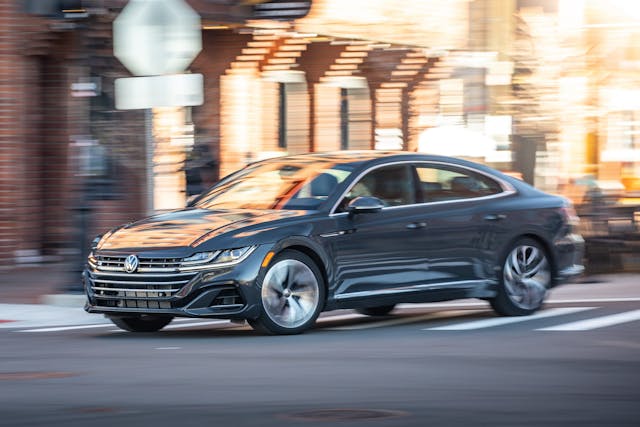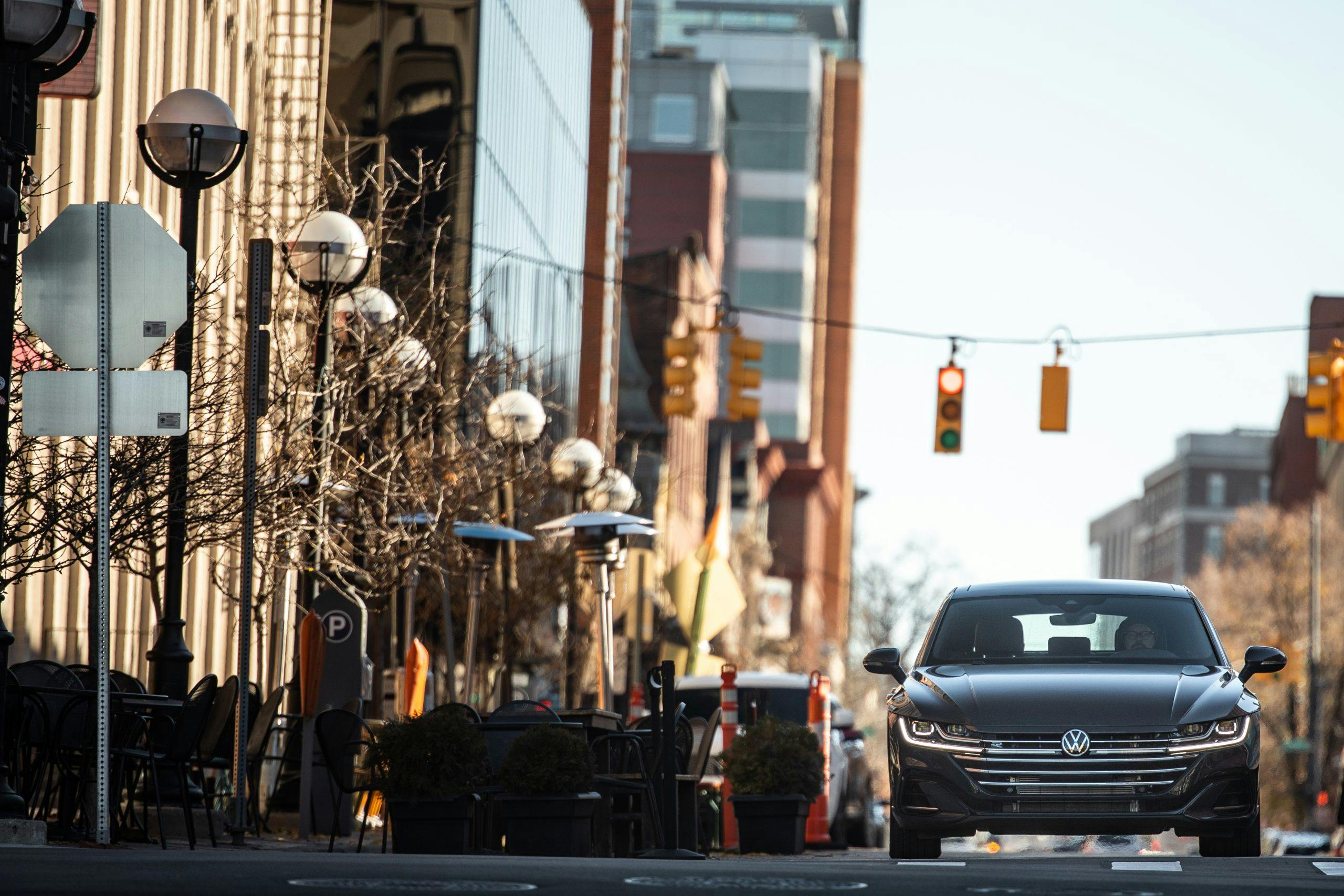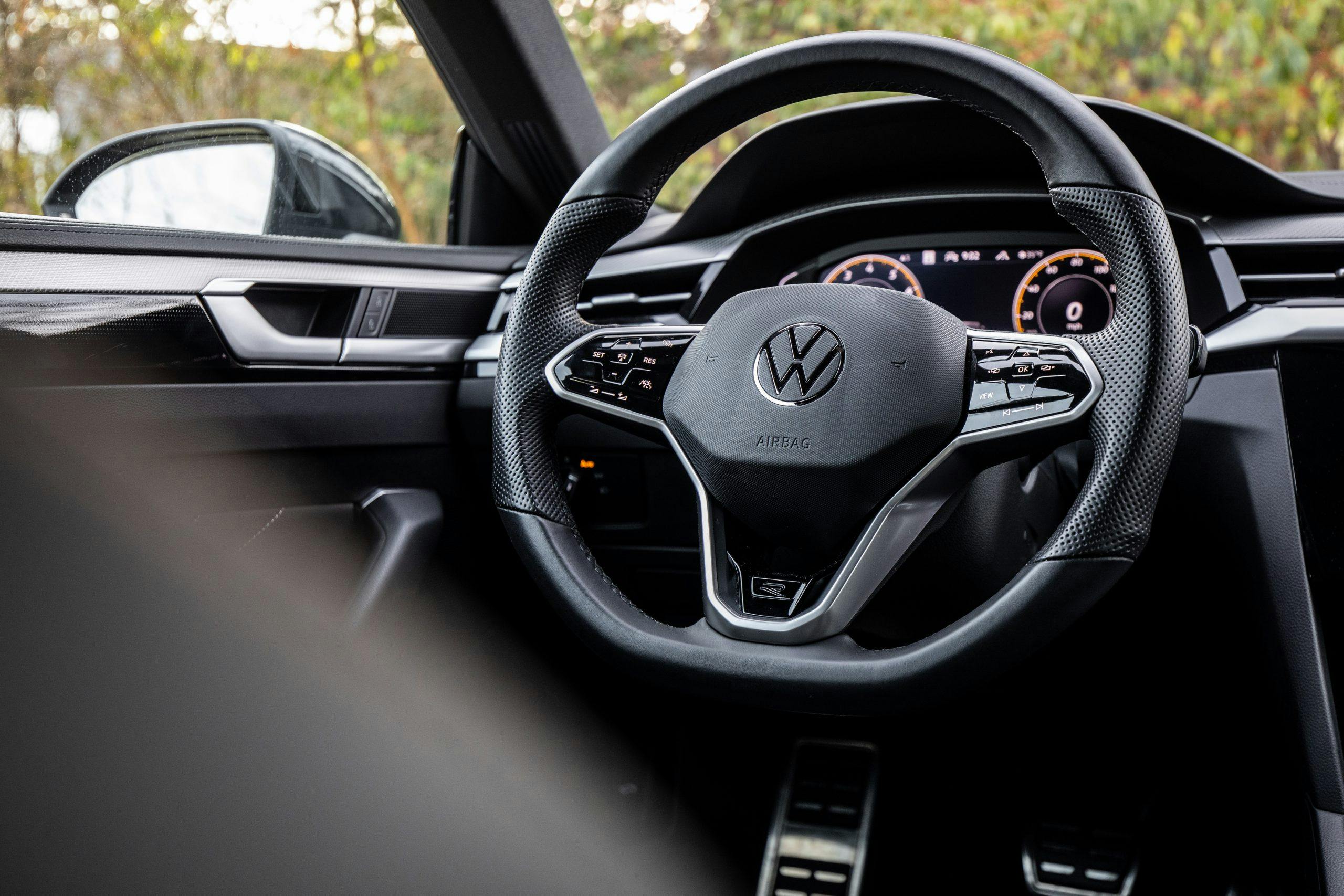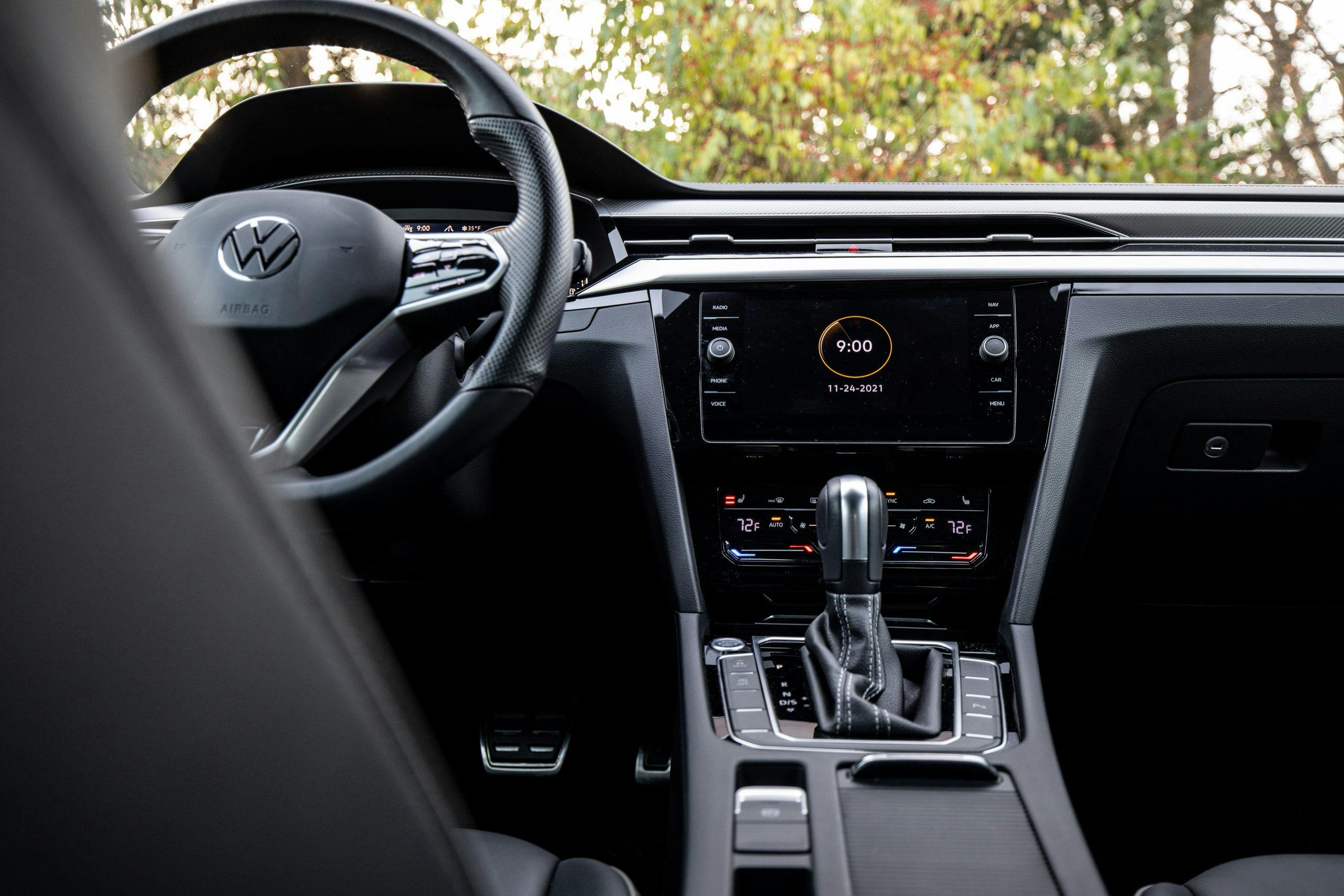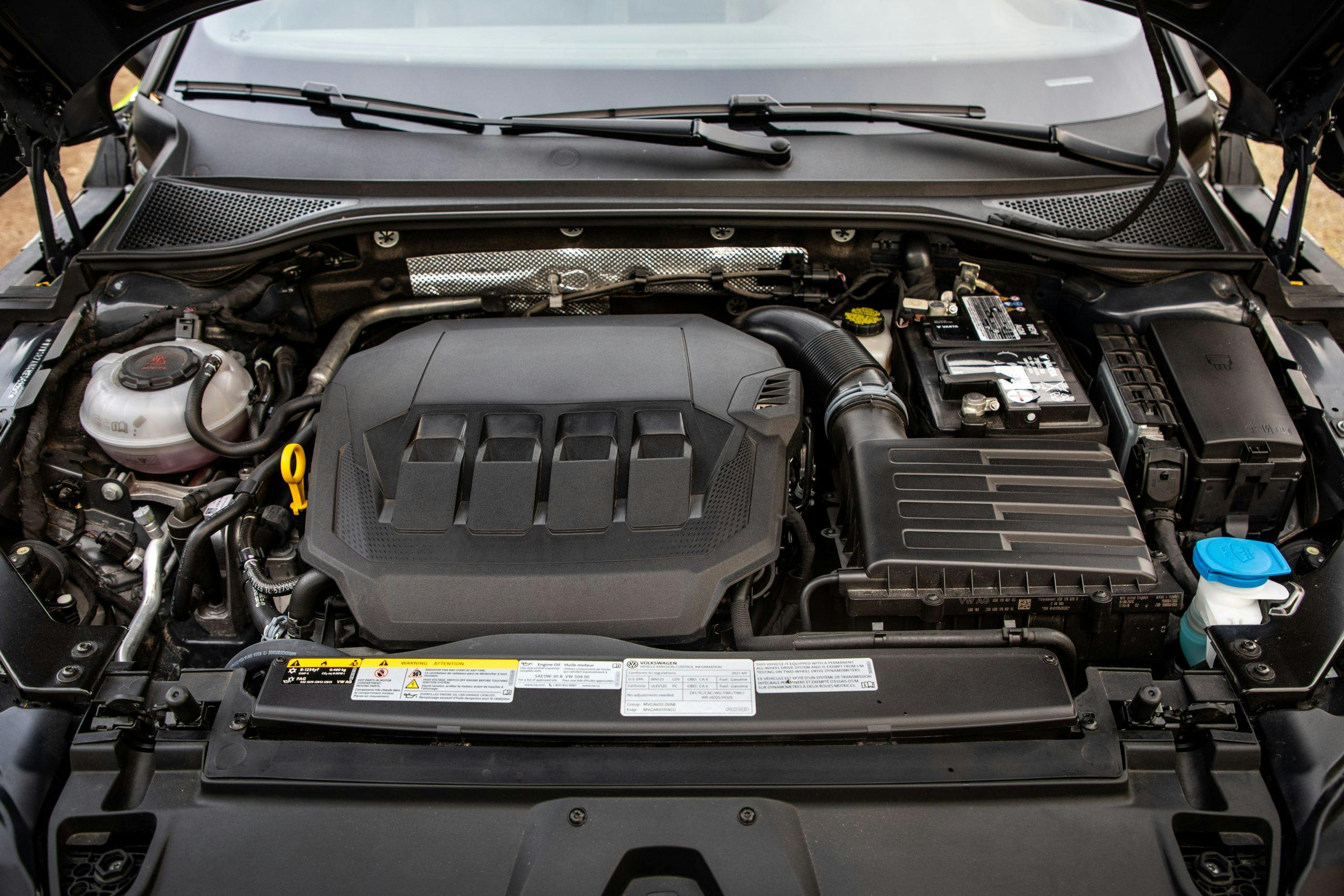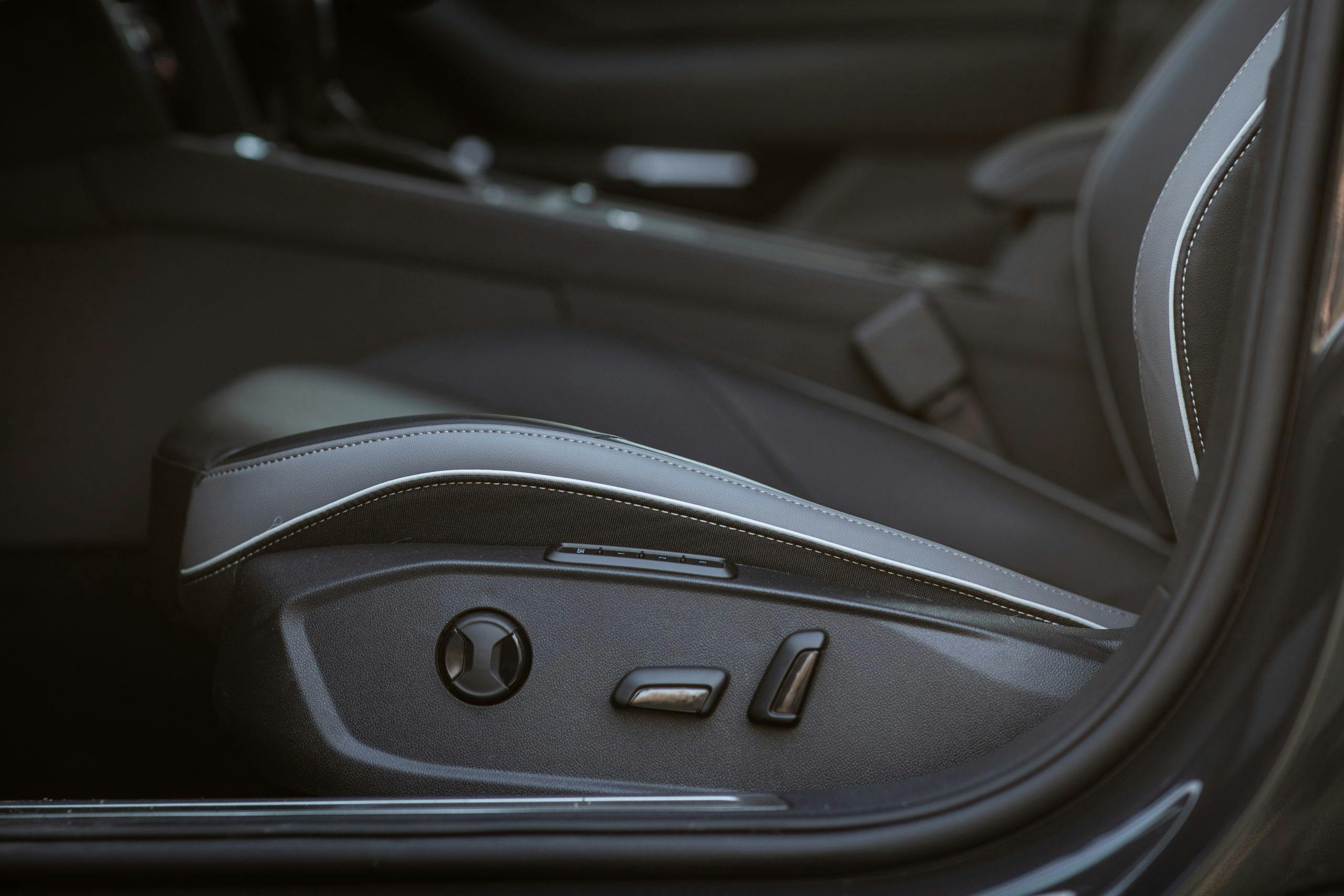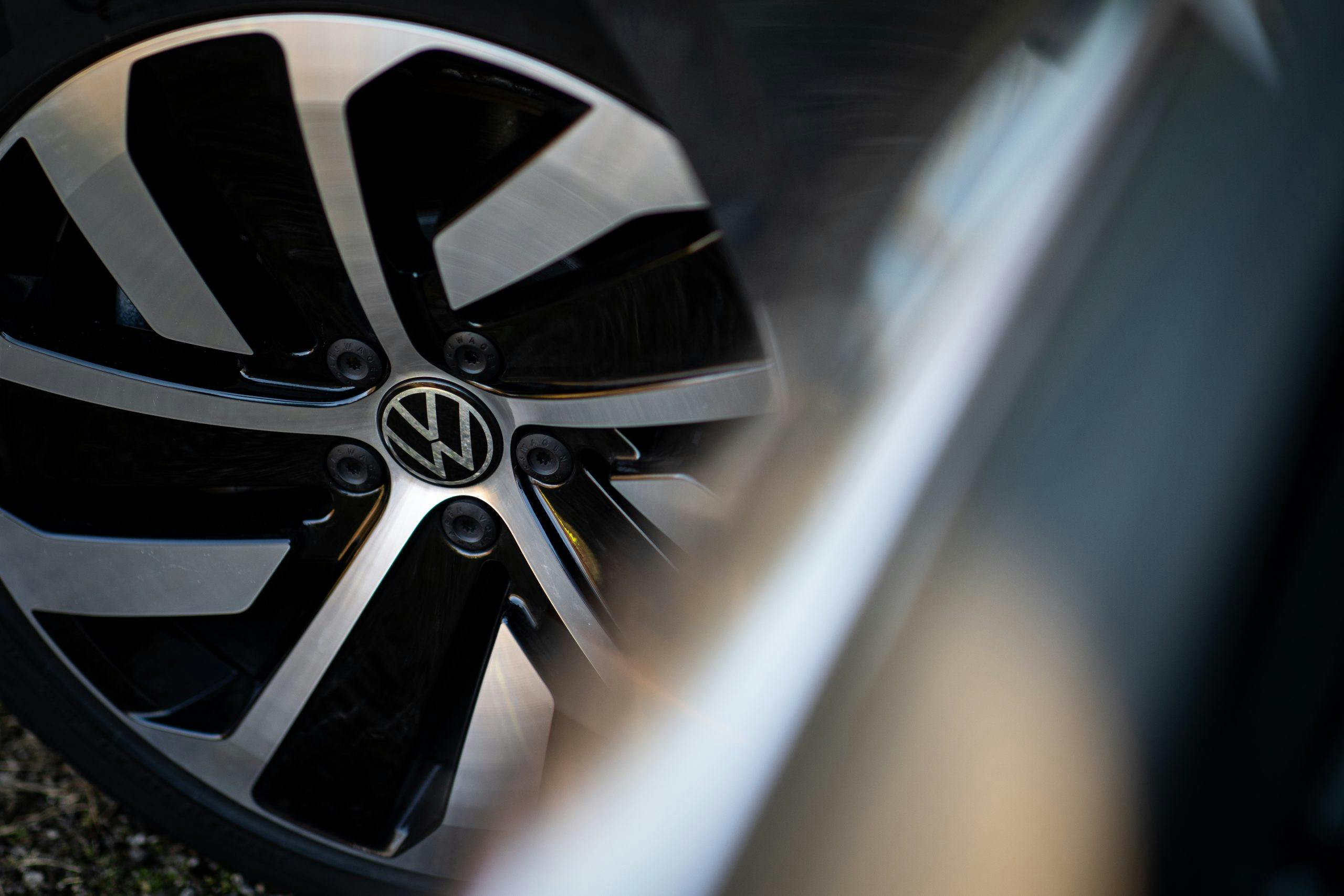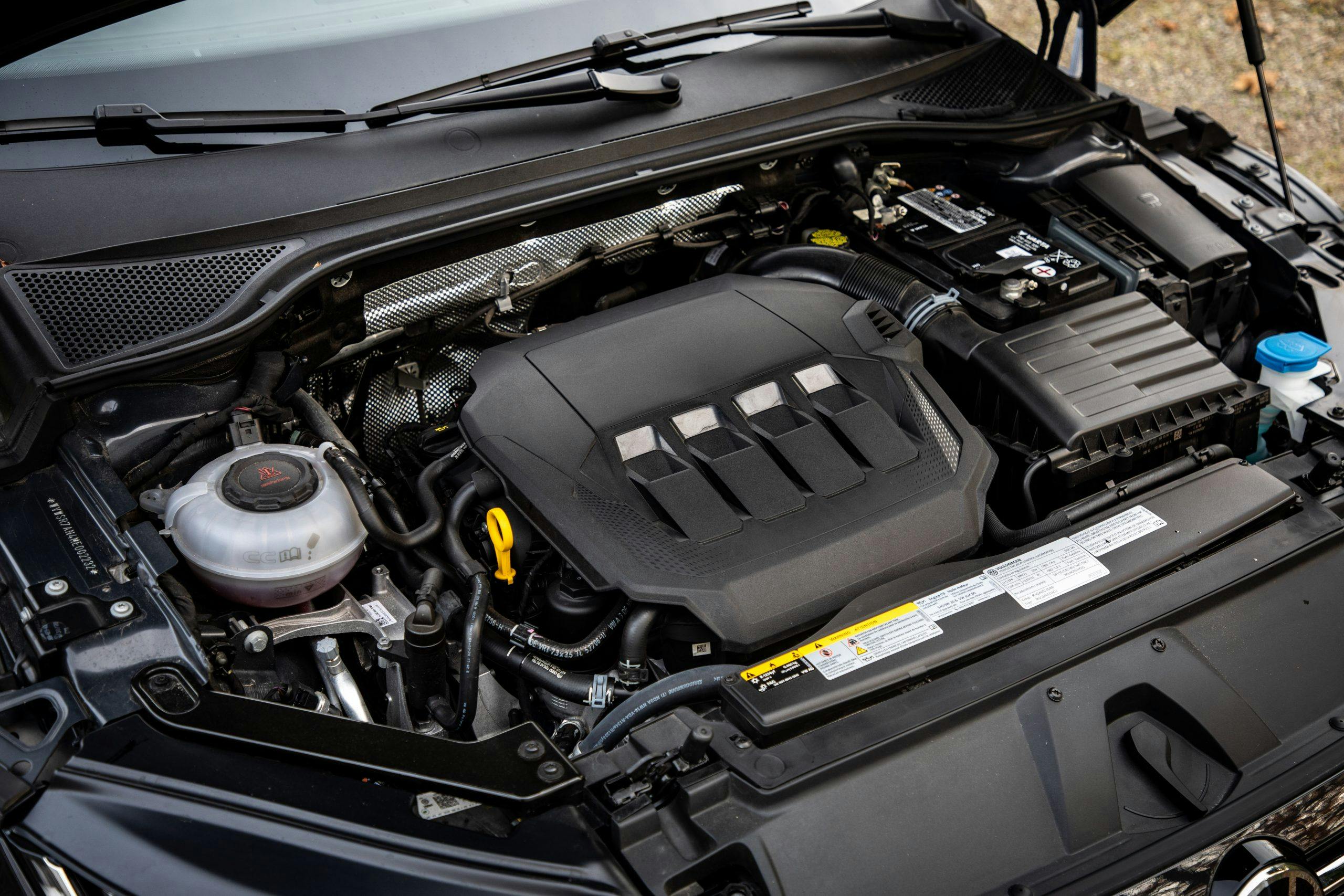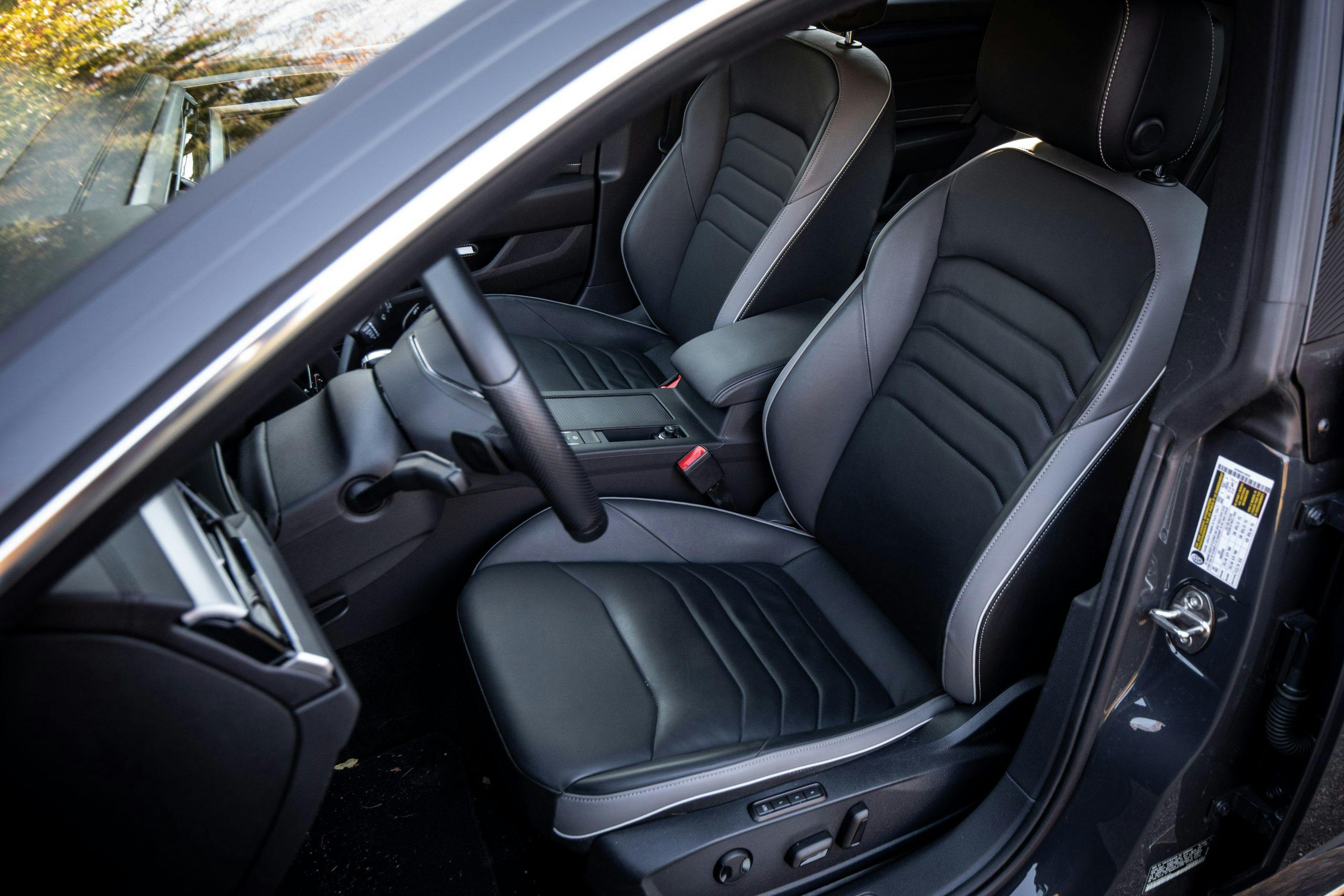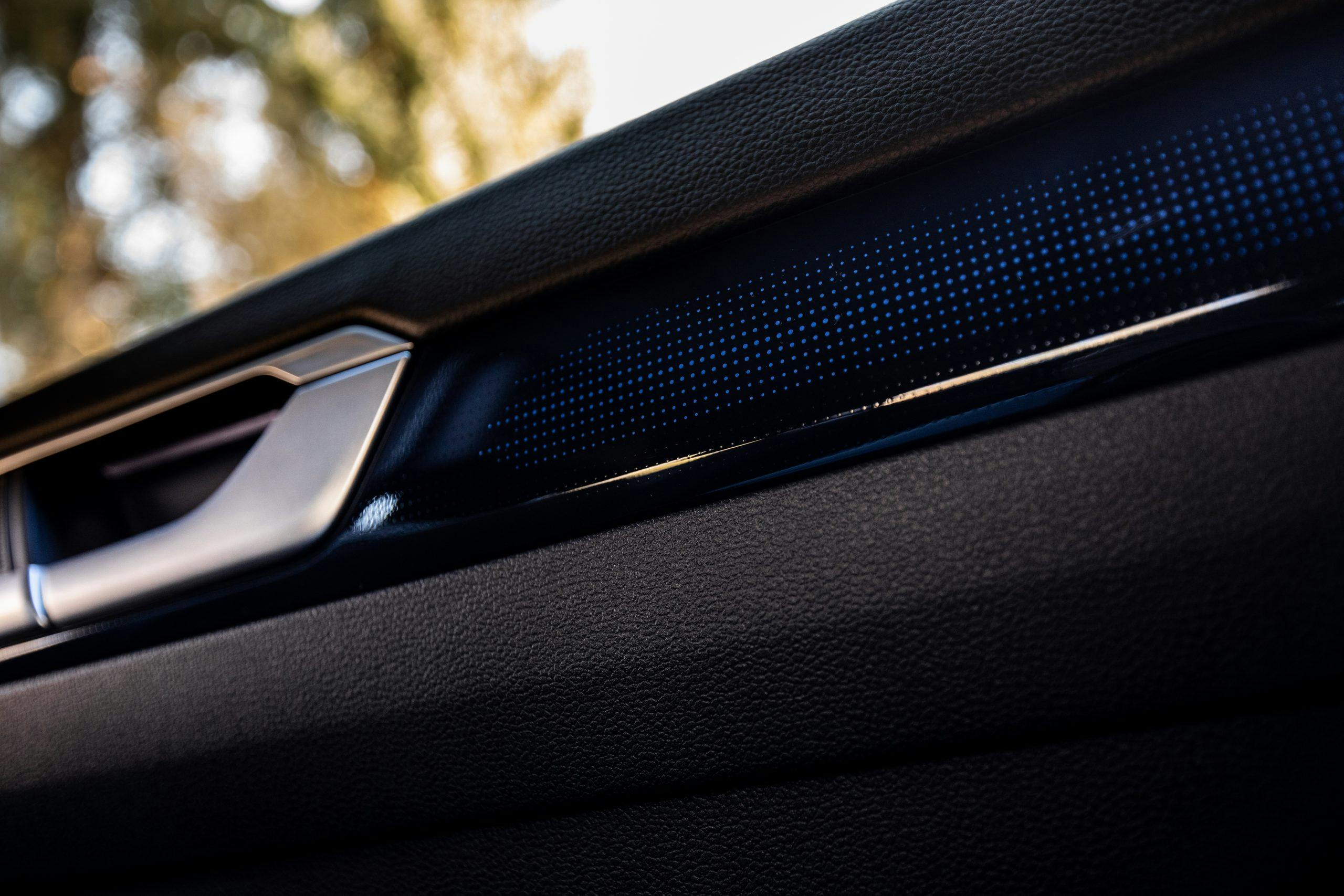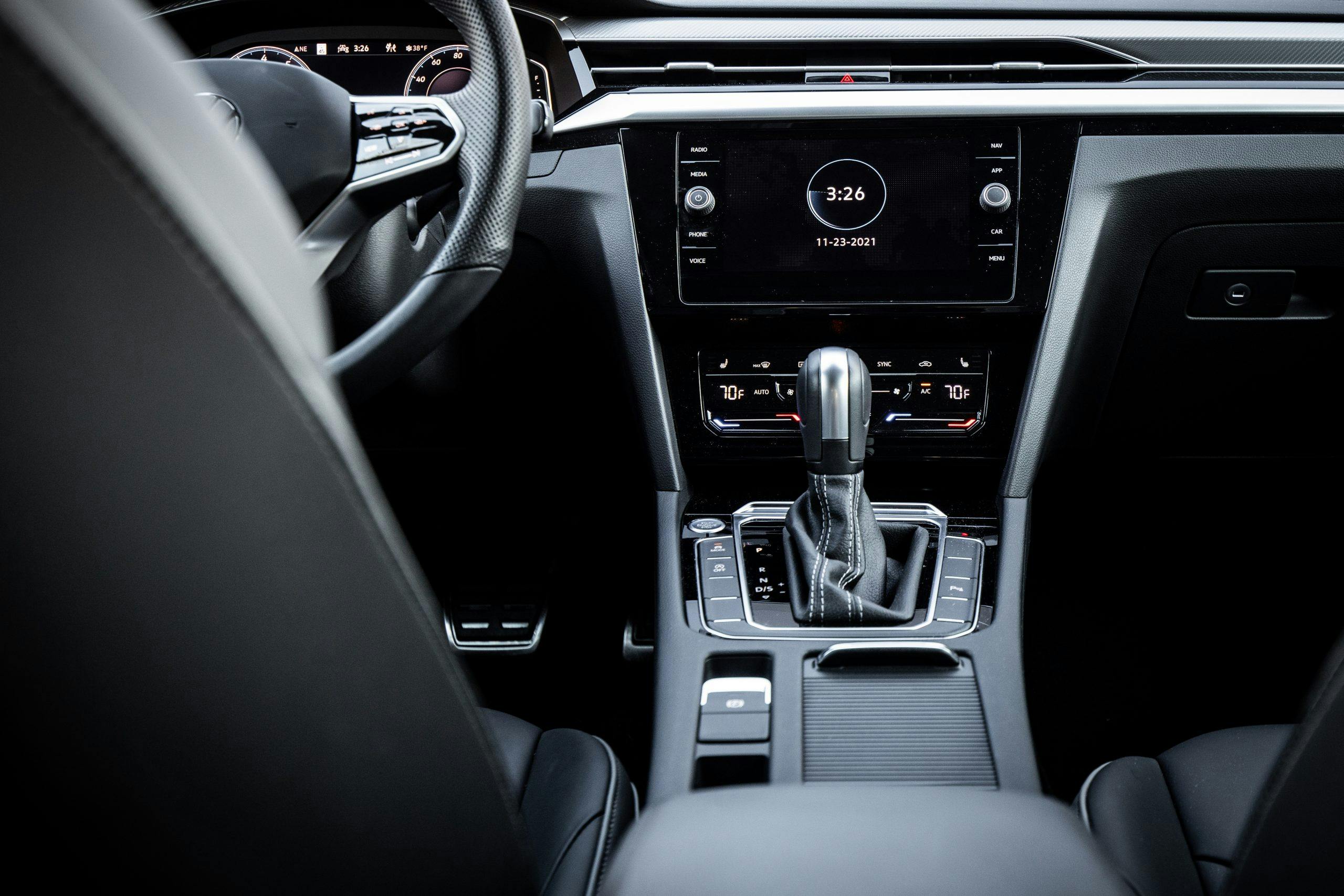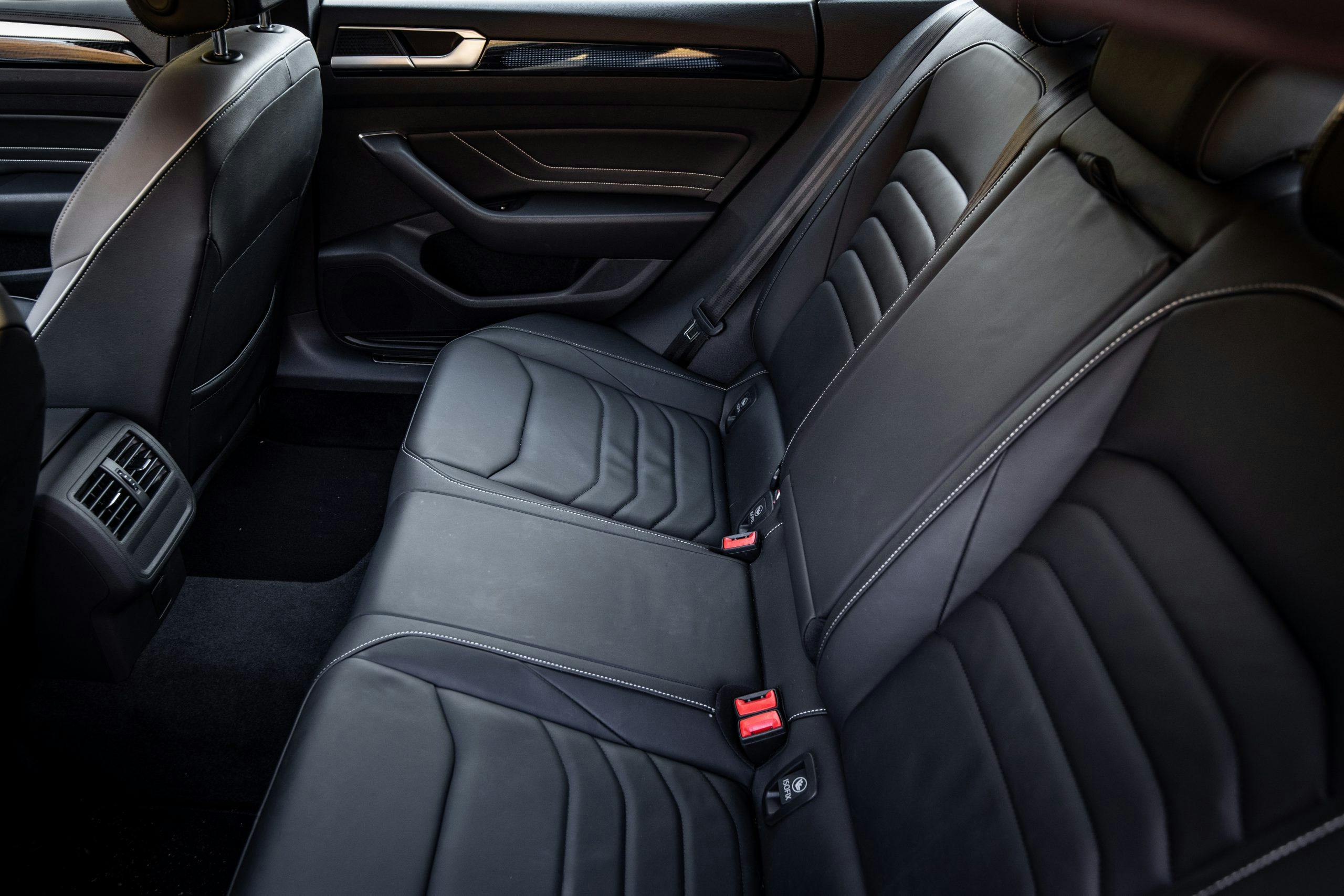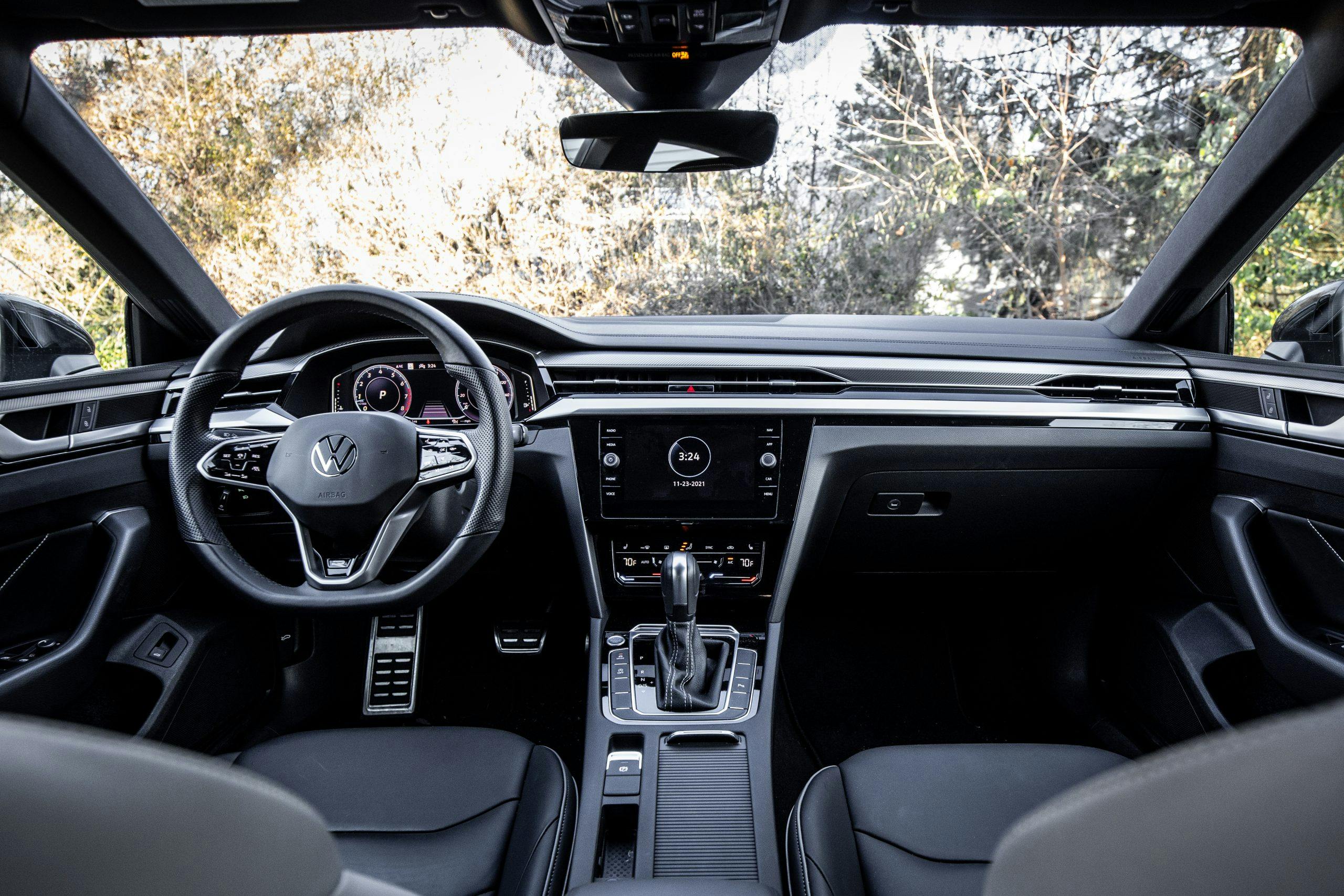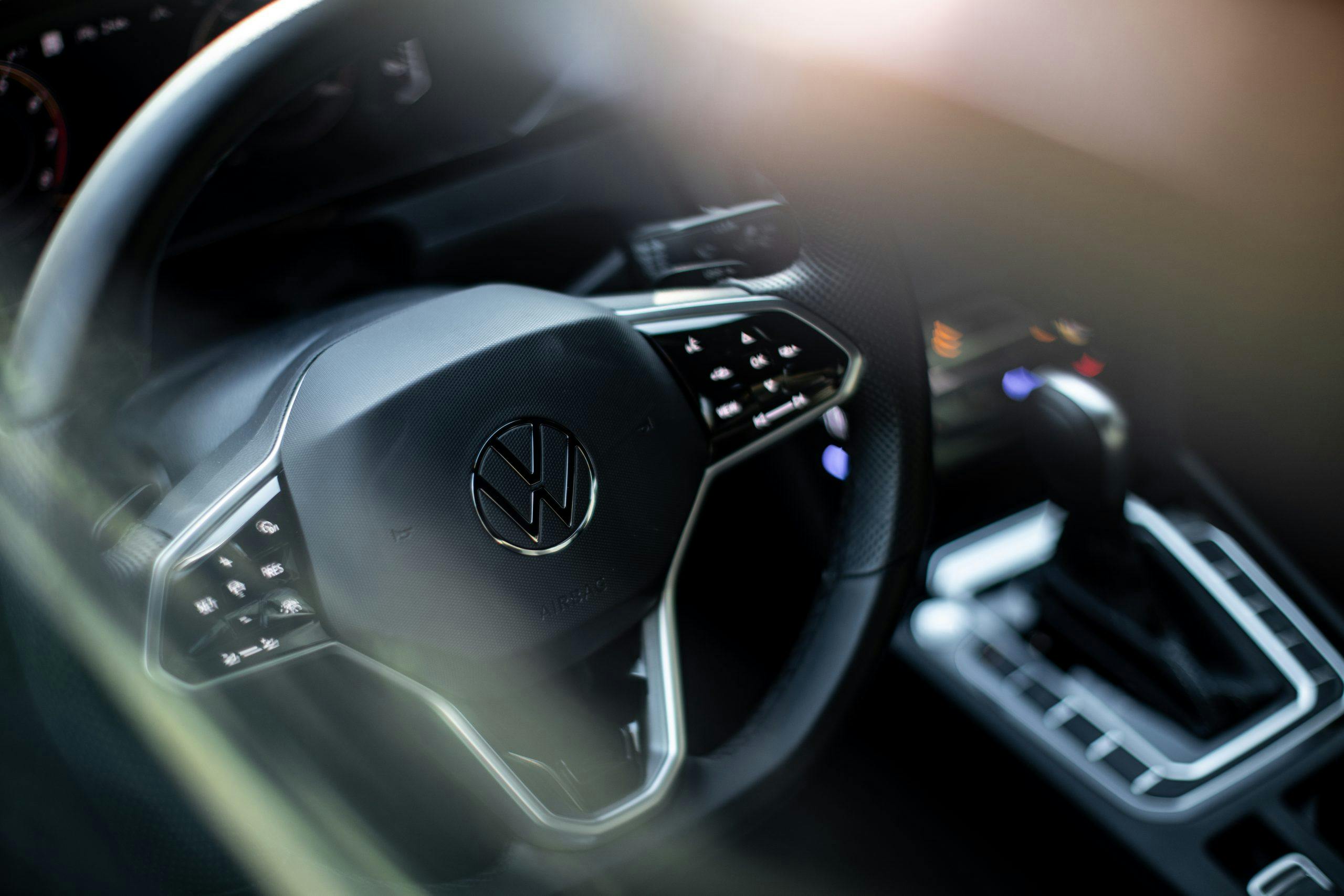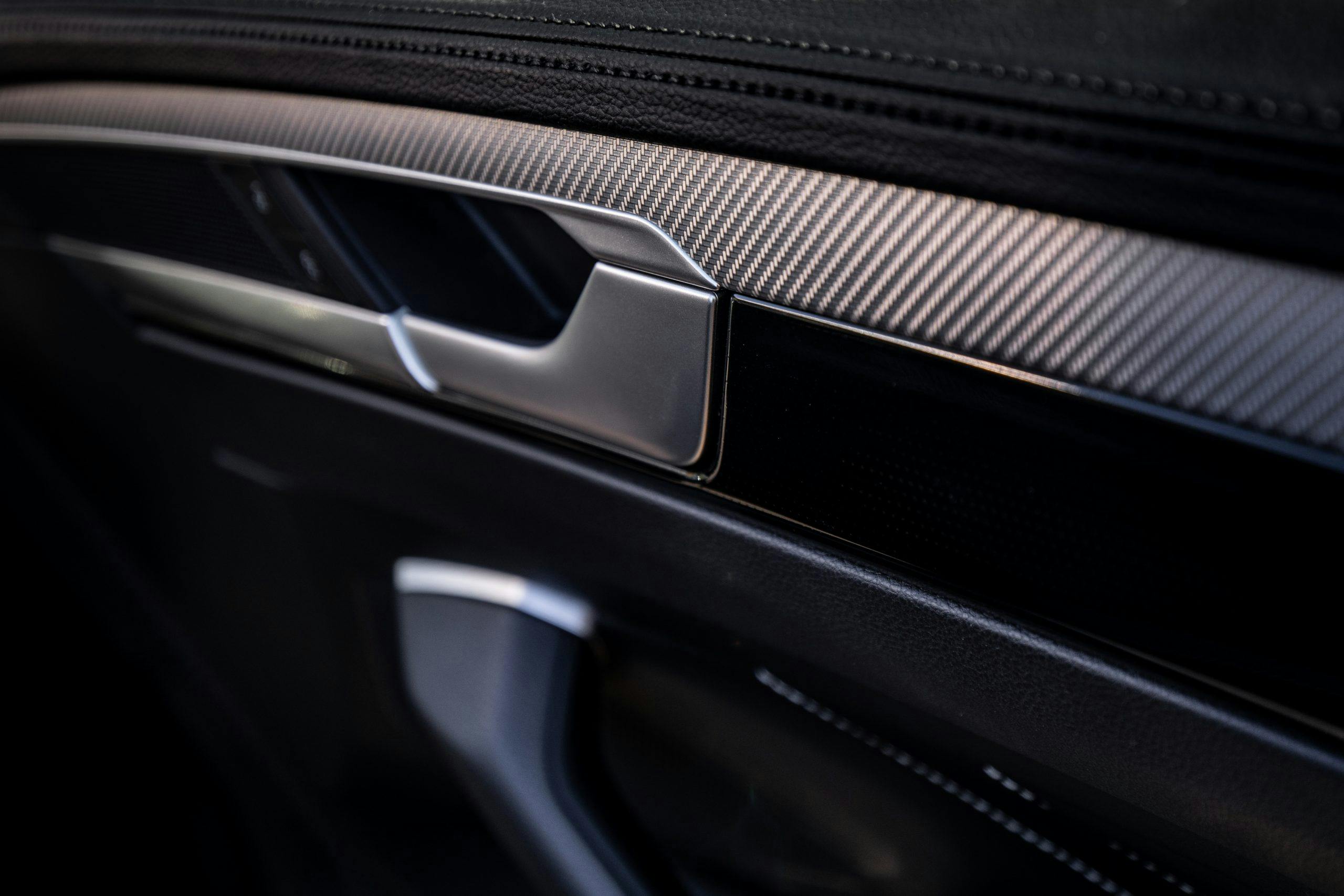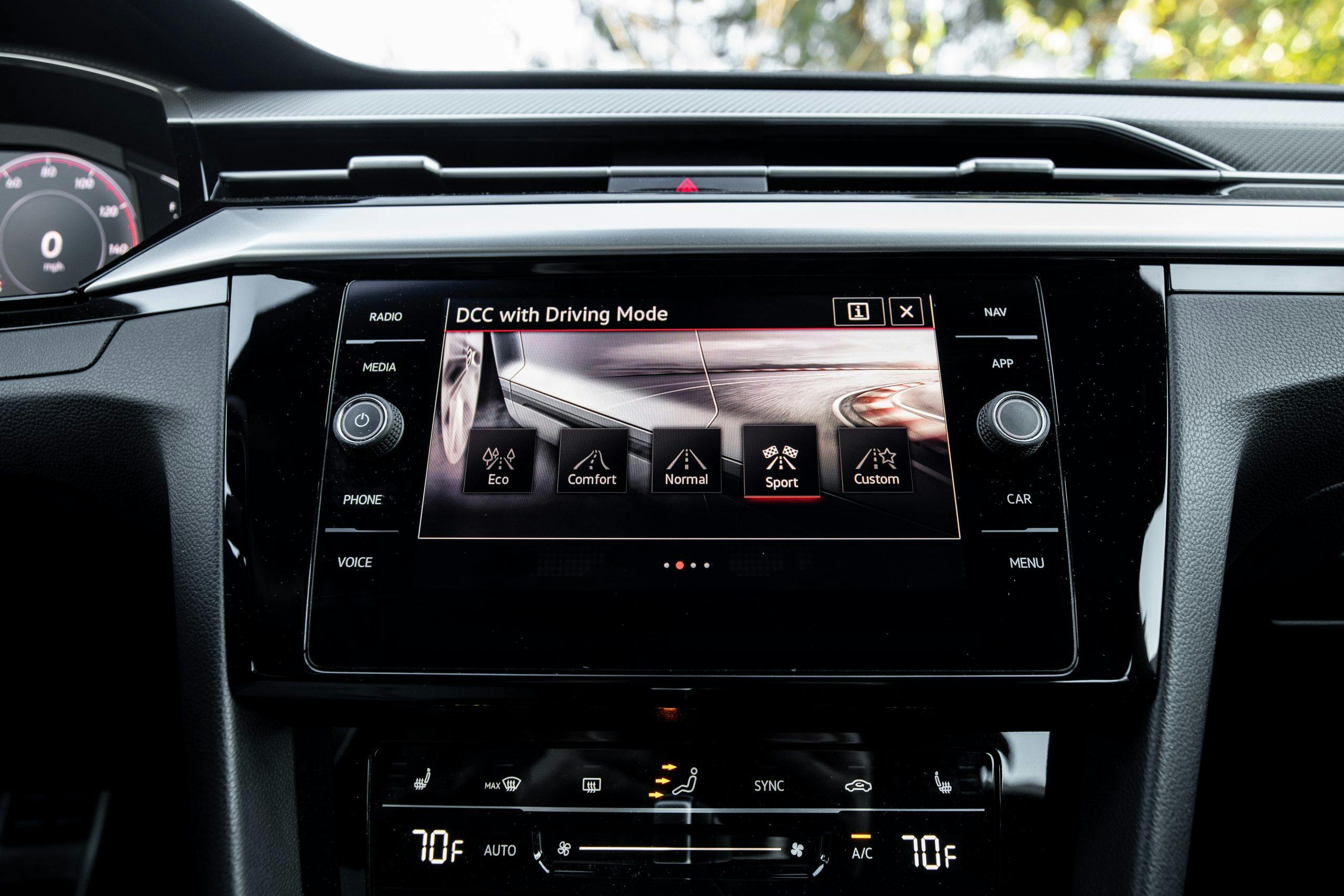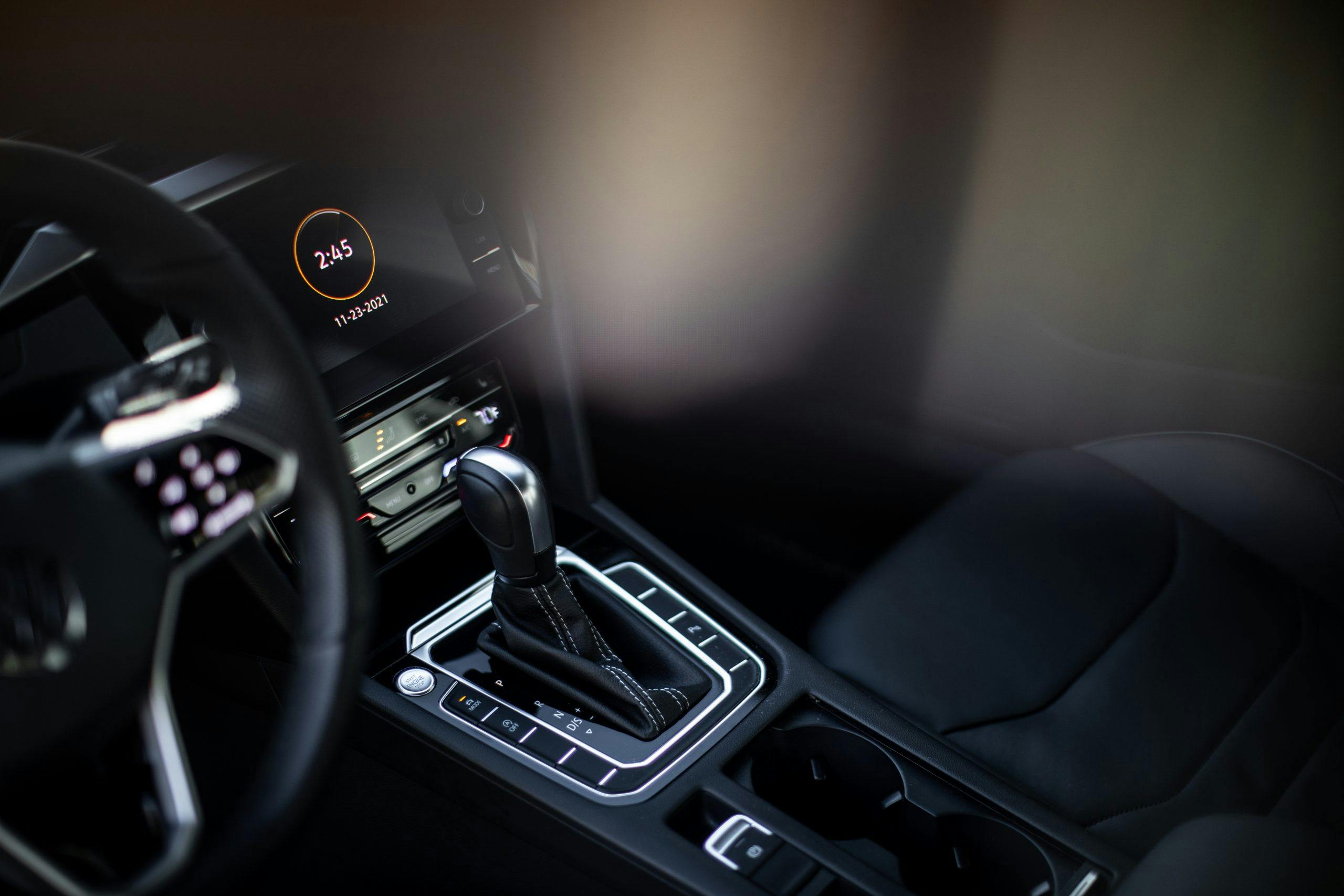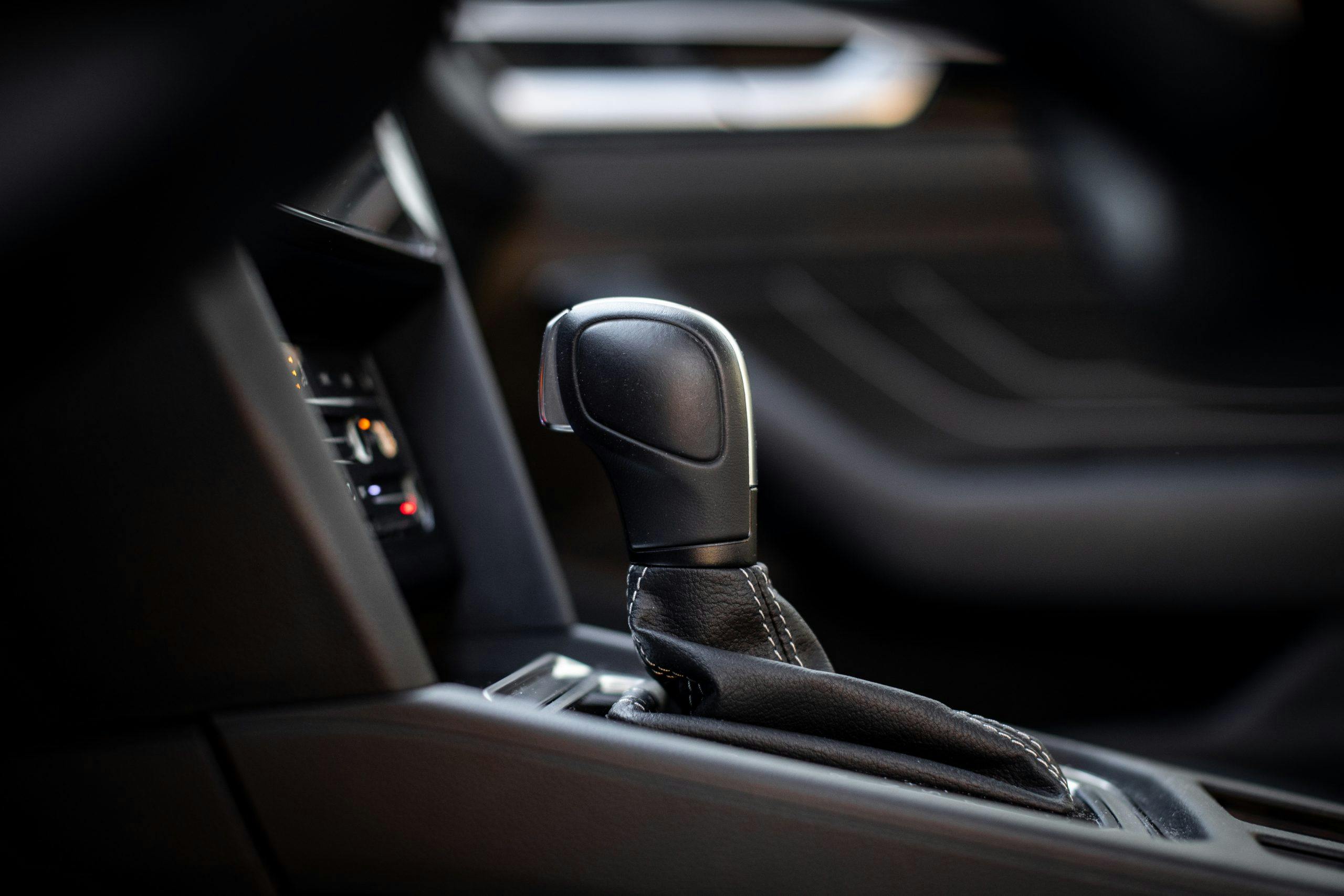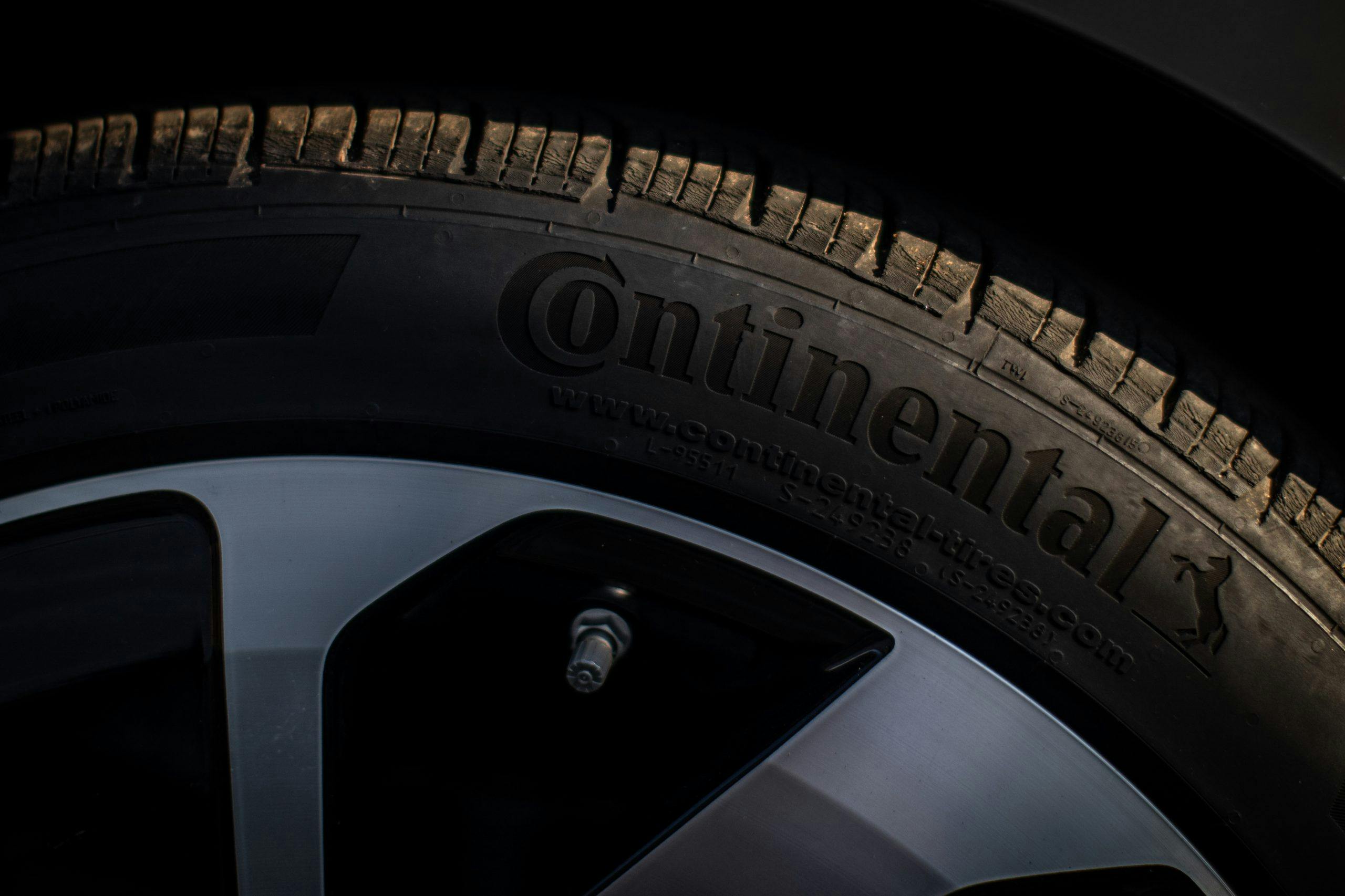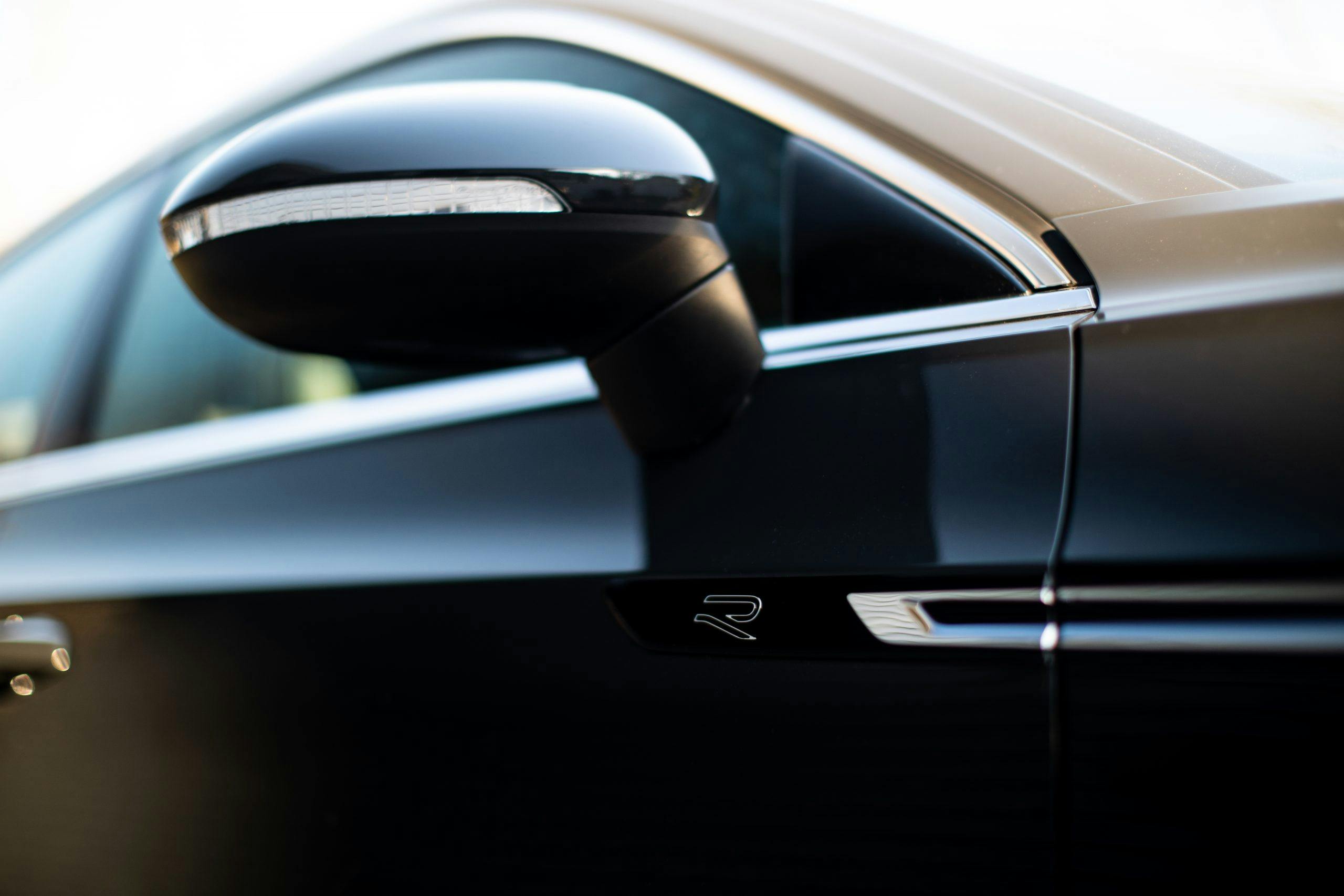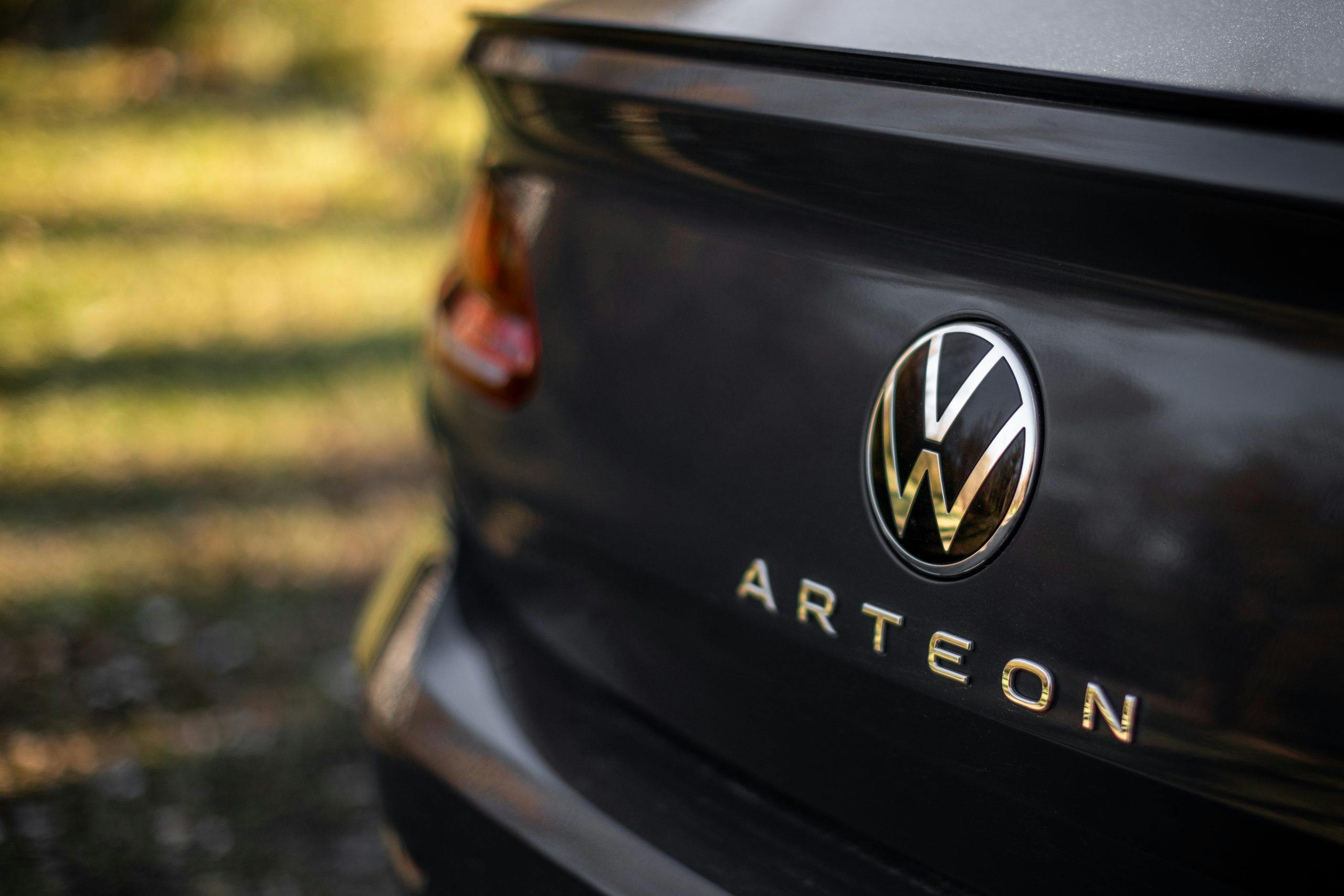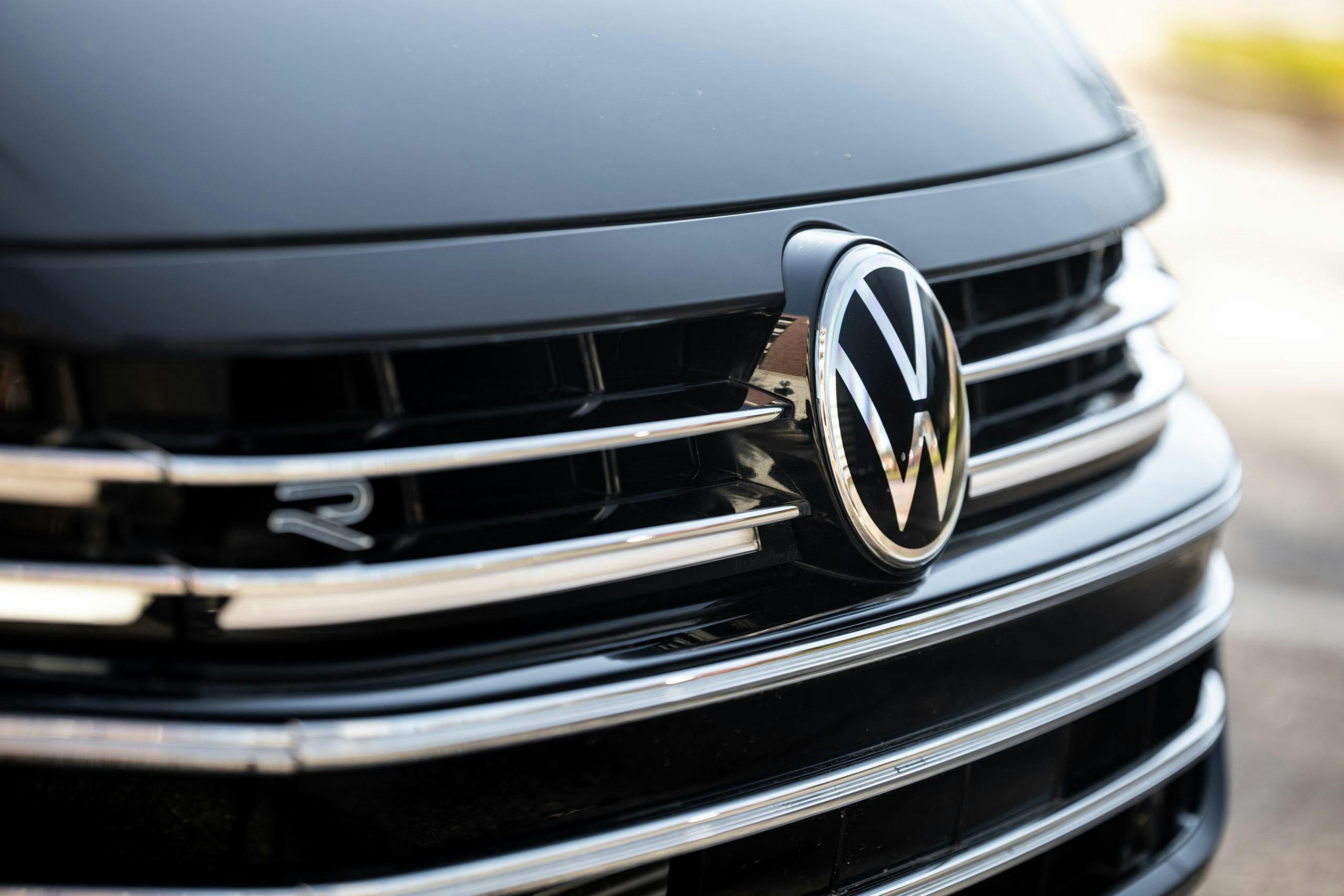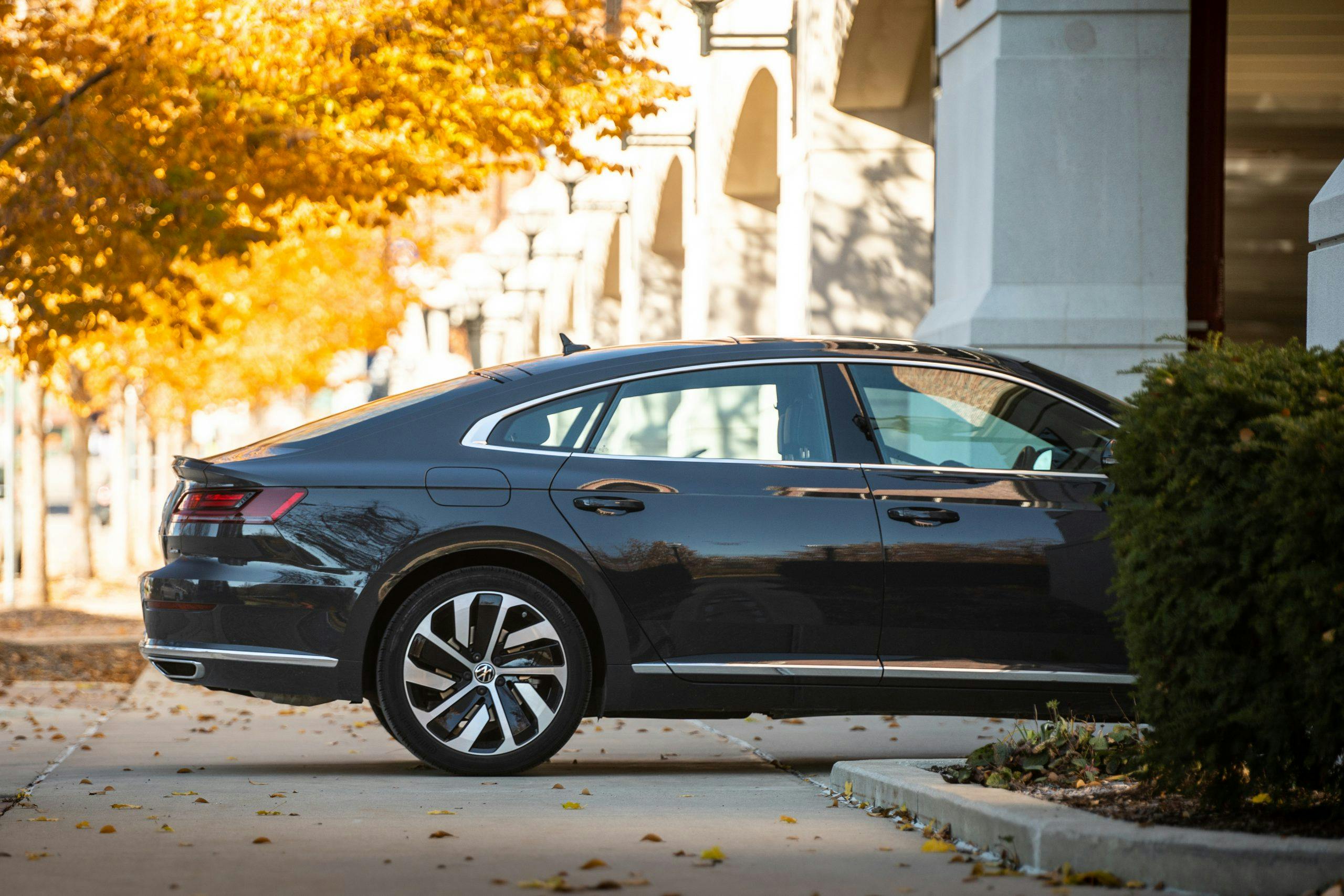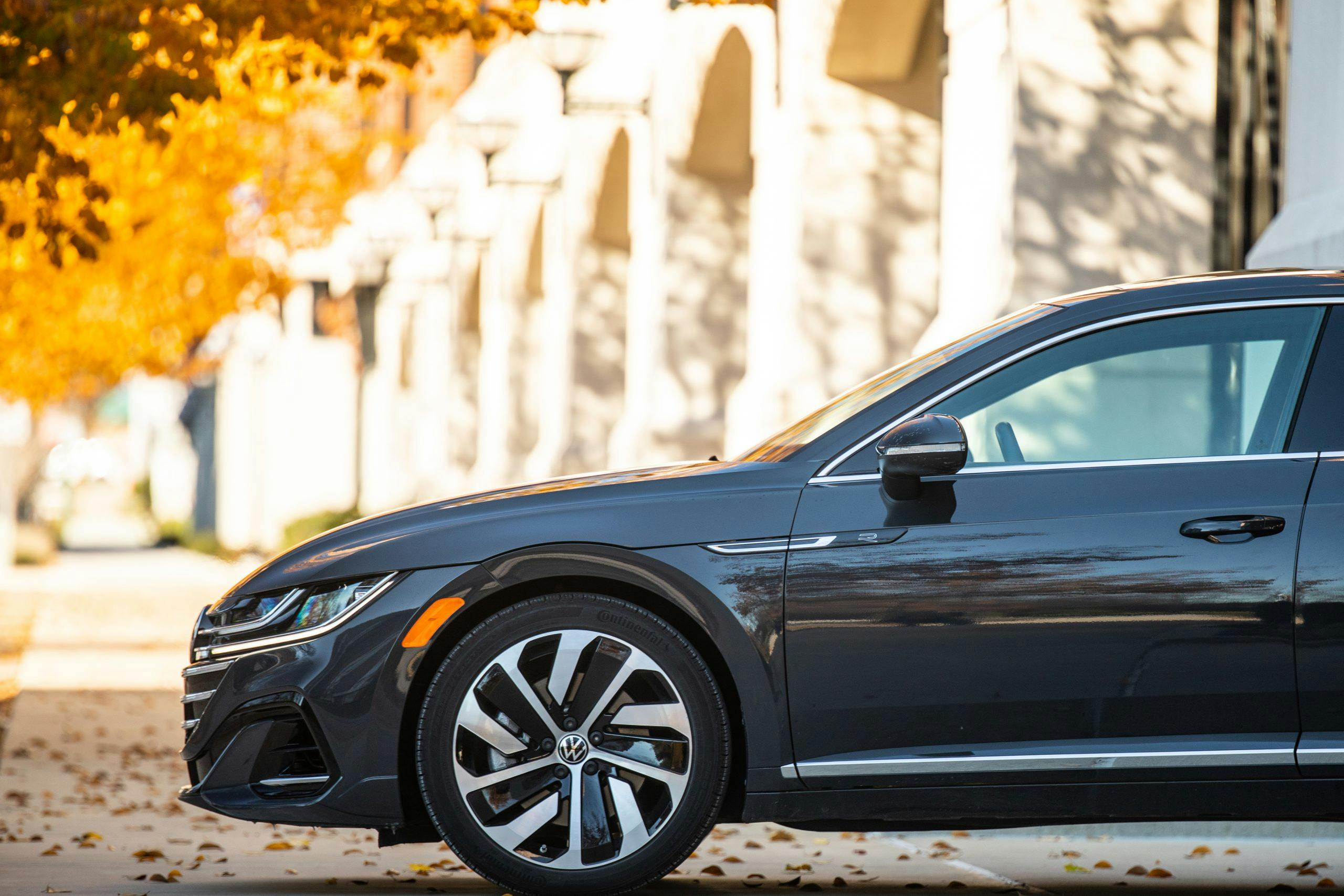Review: 2021 VW Arteon SEL R-Line
Most car reviews start by telling you what the vehicle in question is, but in this case it’s perhaps more important to tell you what this 2021 VW Arteon is not. It’s not the 2022 Arteon, which exchanges this powertrain combo of 268-horsepower 2.0-liter turbo four and conventional torque-converter 8-speed automatic for a new 300-horsepower variant of the same engine, teamed with the seven-speed DSG dual-clutch auto-manual. We will review one of those in the near future, but the 2021 Arteon is still very much in showrooms and in stock, which makes it worth reviewing despite its lame-duck status.
This Arteon SEL R-Line, which rings the cash register for $43,185 including destination, is also very much not a Volkswagen Phaeton. Your humble author took delivery of not one, but two new Phaetons between October of 2005 and April of 2006, and I do not regret doing so for a single moment. The Phaeton was a true moonshot car, a platform twin to the Bentley Continental Flying Spur that matched or exceeded the Mercedes S-Class of the era in most respects. The closest thing you can buy to a Phaeton nowadays is the Chinese-market VW Phideon, which is basically an Audi A6 in VW drag.
It’s better to think of the Arteon as an upscale-ish take on the discontinued Volkswagen Passat CC “four-door coupe”. Like the CC, the Arteon is a transverse-engined remix of the Passat sedan. It has a wheelbase halfway between the standard US-market Passat and the Chinese long-wheelbase version, plus a very nice liftgate in place of a conventional trunk. It lacks the size, weight, solidity, power, features, and sheer presence of a Phaeton, which is fine because nobody really wanted any of those qualities, and particularly not for $65,000 and up in 2005 dollars. (That’s ninety-five grand in today’s degraded currency, by the way.)

Alright, that’s what the 2021 Arteon SEL R-Line isn’t. This is what it is: a perhaps accidental throwback to a better, happier time at Volkswagen. Specifically, it reminds me of the 1990 Passat. Like that 134-horsepower, shades-of-black-interior sedan, the Arteon is a high-priced, no-frills, German-assembled take on the slightly upmarket family sedan that offers precisely zero “surprise-and-delight” in terms of features or creature comforts but nonetheless endears itself to its drivers over time.
The first few hundred miles you spend behind the wheel of an Arteon, you’ll wonder why anybody would waste forty-five grand on something with the interior ambiance of a Kia Rio and the approximate accelerative prowess of a Civic Si. Over time, however, it will sink its teeth into you a bit. Not in the sense that it’s possible to become accustomed to pretty much any car eventually, but rather in the sense that you’ll come to appreciate the high quality of the vehicle beneath the fuss-free surface.
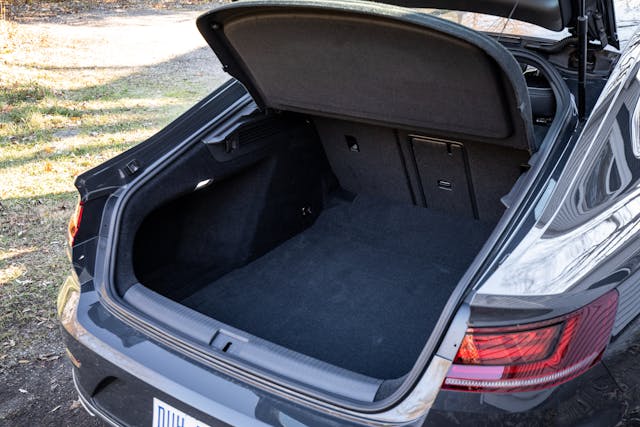
In an era where Hyundais and Kias looks like auto show concept cars, the Arteon’s hatchback shape doesn’t seem very boutique — but there’s not a bad angle to be found on the styling and the liftback “trunk” is truly spacious. If you still miss the old Saab 900 and its ability to swallow anything from Cannondales to chifforobes, you’ll smile to see what the Arteon can carry. Truthfully, it can handle five people and their carry-on luggage nearly as well as a Phaeton.
Each of those five people will find more than adequate space in the sober interior, with rear headroom that puts most of the “four-door coupes” out there to shame. There are a few modern touches, such as a full LCD dash and a glowing constellation of lights in every door panel, but by and large this car feels like a $20,000 Jetta when you’re in it. The VW Group saves all the good stuff for Audi-and-better nowadays. Which is fine, because the Arteon’s interior is simpler, easier to use, and more functional than pretty much anything the competition has to offer. I drove an Audi RS7 right before the Arteon and I was thrilled to get back in a car with physical switches and a console center stack that owes none of its inspiration to the Samsung Galaxy. As with the 1990 Passat, this is the old-school German approach. Nothing fancy, but everything works in sensible fashion.

The driving experience is equally old-school, right down to the relatively light but communicative steering. The bodyshell is stiff enough to make every corner entry a precise affair, despite the big hole in back for the hatch. I’m pretty sure a 268-horsepower car doesn’t need wheels and tires this big, but the payoff is GTI-matching levels of grip. Antisocial drivers can use this aspect of the Arteon to play a fun game called “Follow Me, Or Don’t” that works like so: wait for someone in an SUV to tailgate you in the right lane of a freeway, then take an offramp at twice the posted speed limit and see if you have any company behind you after the fact. In my experience, this game results in some very chastened-looking drivers a few hundred feet in arrears who have just learned firsthand how a stability-control system works. The Arteon doesn’t even look like it’s cornering hard; very few mass-market sedans have this little body roll.
Like any good Volkswagen, and certainly like that 134-horsepower sixteen-valve Passat of thirty-one years ago, the Arteon encourages its driver to make time at all times. The sad irony is that most of the VW Group’s “sporting cars” have this unpleasant lead-boots feel at anything but ten-tenths attack, and that includes sleds like the RS7 and Panamera, but the low-powered, low-expectations Arteon is actually a true joy to drive at any speed. Of course, it’s stable and drama-free at Autobahn pace, as well.
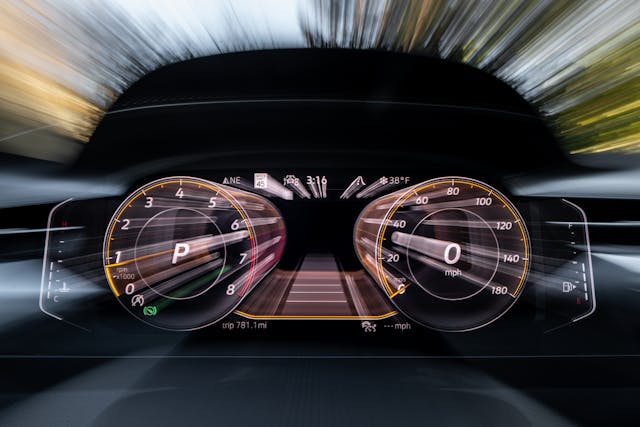
As a left-field five-door entry-prestige car from a non-prestige brand, this VW has almost no effective competition. Accords and the like are going to be perhaps eight grand cheaper with equivalent or better equipment, while the 3-Series crowd will be another ten G more. In neither case will you get the same utility offered by the Arteon’s liftback. Ah, but there’s one dark horse competitor out there, called Stinger. The five-door Kia costs a lot less if you’ll accept a 300-horse four-banger, and not much more if you want the fire-breathing twin-turbo V-6. It’s a legitimate rear-wheel-drive platform with much better weight balance than the Arteon can offer, so don’t expect to win a confrontation on dragstrip, autocross, or road course. If you base your decisions on spec sheets, you’d be a fool to take an Arteon over a Stinger.
Ah, but the same was true for that 1990 Passat, which regularly took a test-track beating from machinery as diverse as the Camry V6 and the Lumina Z34. You didn’t buy a Passat because you wanted to go fast, because even the late-arrival Passat VR6 wasn’t that fast. Nor did you buy it because it offered good value, because it didn’t. The appeal of the Passat was limited to people who understood its basic virtues and who considered the gingerbread offered by the competition to be a distraction rather than an incentive. So it will be with the Arteon. Do you like German cars? Not today’s German cars, with their hyper-complication, stitched-leather dashboards, and sodden dynamics, but the old kind of German cars? Then you’ll like the Arteon. It’s as simple as that. Don’t worry about what the Arteon is not. It’s good enough for the right buyer as it sits.
2021 VW Arteon SEL R-Line
Base price/as-tested: $43,185/$43,185
Pros: The way it looks, the way it carries stuff, the way it drives.
Cons: Not much in the way of features; spending $43,185 on a sedan that isn’t fast may make some people furious.
Summary: The Arteon has lovely skin, inside which it is perfectly comfortable.
